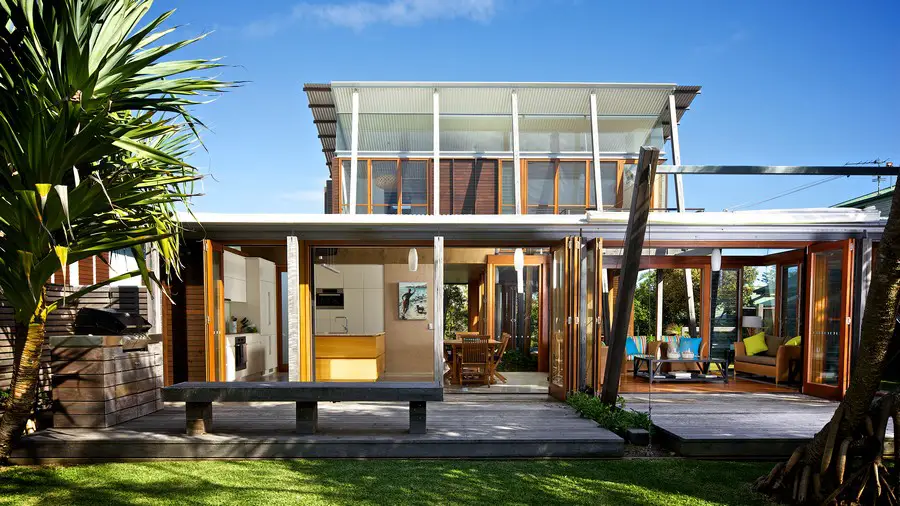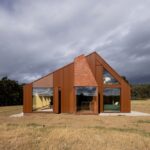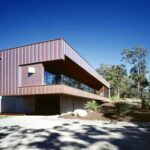Australian Sustainable Architecture, New Property Trends, Architect News, Home Designs
Sustainable Architectural Trends in Australia
Key Residential Properties in Australia – New Homes Design
13 June 2019
Sustainable Architecture Trends in Australia
Sustainability has been at the forefront of global concerns in recent years, and the importance of this issue has filtered into the architecture and design industry.
There is an increasing focus on how the design of a building will affect its surrounding environment. Australians are leaders of this cause, with the encouragement of the Green Building Council of Australia. There are now 2289 certified projects in Australia that have met their Green Star Standards of significantly reducing greenhouse gas emissions, electricity, consumption of potable water, and increasing the recycling of construction waste.
Therefore, more and more Australian architects and designers are striving for Green Star Standard Buildings to improve their designs, win projects, and maintain social responsibility within their organisation.
Inevitably, this has created many trends in the industry, including solar roof tiles, eWater systems, cross laminated timber, tri-generation systems, and small footprint apartments.
- Solar Roof Tiles
Solar roof tiles use renewable energy to reduce costs of electricity. Sunshine Plaza in Melbourne’s West has the largest solar roof installation in Victoria, using 4,175 tiles. This allows 45% of the malls electricity to be powered by solar energy. Commercial property developers are increasingly adopting this renewable energy trend to make their buildings more environmentally friendly.
- eWater System
eWater sterilisation systems are increasing in popularity this year through their innovative technology that creates an alkaline cleaning method for all-purpose cleaning, and an acidic method for sanitisation. The system allows for this by combining water, salt and electrical charge that splits negative and positive ions. Zagame’s House is one of the latest buildings to install a eWater system.
- Cross-Laminated Timber
Cross-laminated timber (CLT) is a hard-wearing material that has become popular in Europe and is now making its way into Australia. It is cost-effective, requires less labour, and produces less carbon emissions than heavier materials such as concrete or steel. CLT also allows for easier demolition and recyclability, and reduces on-site waste. Monash University have used this sustainable material for their Peninsula campus student accommodation.
- Tri- Generation System
A Tri-generation system combines cooling, heating and power and in doing so reduces electrical usage which lowers fuel and energy costs. It decreases greenhouse gas emissions and doesn’t use any chemical pollutants, therefore improving the overall sustainability of a building. The use of this system contributed to Collins Square achieving a Green Star Design, and the highest level of sustainable building concentration in the Southern Hemisphere.
- Smaller Footprint Apartments
The rise of smaller apartments in Australia has led to more design innovation within less space, often steering towards being more ergonomic and environmentally conscious. For example the ‘Nightingale Village’ design, which plans to be completely carbon neutral and fossil fuel free whilst in operation. It will achieve this through shared outdoor spaces and dining areas, rainwater harvesting, and solar energy that provides lower costs and carbon footprints for each of its residents.
Article written by: Urban.com.au
Australian Houses
Australian Residences : D-J
Australian Homes : K-O
Australian Properties : P-Z
V House, Sunshine Coast, Queensland
Design: Shaun Lockyer Architects
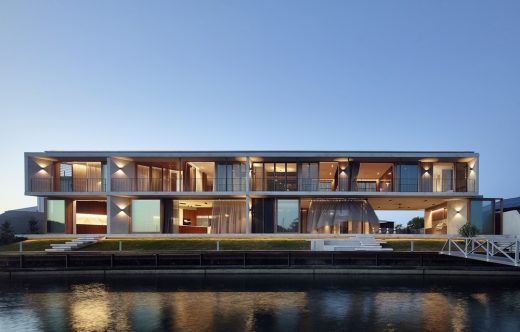
photograph : Scott Burrows
V House on the Sunshine Coast, Queensland
Glass House Mountains, Maleny, Sunshine Coast Region, Queensland
Design: Bark Design Architects
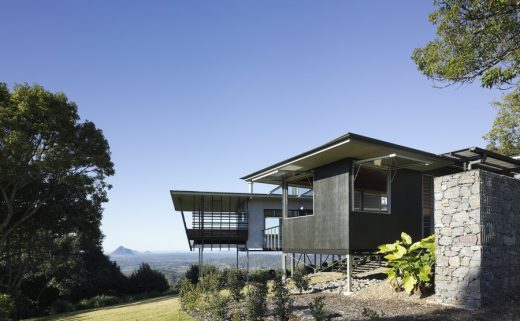
photograph : Christopher Frederick Jones
Glass House Mountains, Queensland
Location: Australia
Australian Architectural Designs – chronological list
Buildings / photos for the Australian Residential Architecture page welcome

